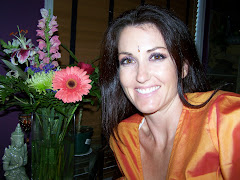When shopping for ourselves or our homes, we always see the attractive end product that has reached the store, packaged and displayed so marvelously. Have you ever wondered where these items originated? Part of my environmental design passion involves educating my clients to be aware of the history of a product. This means knowing the materials, plus the energy required to bring it to us, the end consumer.
While in
After the experience, I couldn’t resist sneaking a peek into one of the silk producing factories. Very much like one of those children’s programs that take a tour through an industrial plant. I had the opportunity to visit the world famous Mysore Silk Factory, to satisfy my curiosity. Wow, was it ever interesting!
My first impressions were of the loud noise that came from the expanse of clanging, antiquated machines, efficiently weaving and bobbing 15,000 threads per row, into intricate patterns. The cogs and wheels busily hummed in see-saw motion to create the smooth, striking textile we all adore. Unlucky for me, no pictures were allowed in order to protect the exclusive designs. It really was intriguing to see how the bundles of raw material dying, hanging and drying, end up being spun unto spools and then woven into the final fabric. It reminded me of cotton candy, in pastel blue, yellow, pink and orange. There was even a gold thread section of the plant, where the proud workers explained how the threads were fifty-percent genuine gold.
Seeing the silkworms and the cocoons would have been my favourite part, sadly, that was at another location. But it was even sadder when I learn that the worms die in the fabrication process. As consumers, it is important to be aware of the source, so when it comes time to decide on what to purchase, one can make their own ethical choices. “To produce just one hundred grams of silk, approximately 1,500 worms are killed…Alternatively, there are many soft, smooth and shimmering synthetic materials that are similar to silk, known as Artificial or Art Silk and China (not Chinese) Silk. Of these, rayon is of vegetable origin and nylon and polyester are petroleum products.” (PETA
Although my saris are of synthetic fiber, I did end up purchasing a silk sari that inspired me for a great decorating idea- I am having it sewn into a king sized duvet cover. The six meters of sari fabric is just the right amount to create a bed cover and two very fancy pillow shams. For smaller home décor accents, a ‘Dupatta’, which is a large scarf made of silk, cotton or synthetic, can also double as a table decoration. These will be beautiful reminders of my trip to this mystical country. For those who are interested in seeing my silk sari bedding, linens, and East Indian décor, I will be speaking at the Edmonton Home and Interior Design Show. Mark your calendars for September 28-30!
Tuesday, August 28, 2007
SILK FACTORY TOUR
Subscribe to:
Post Comments (Atom)

No comments:
Post a Comment